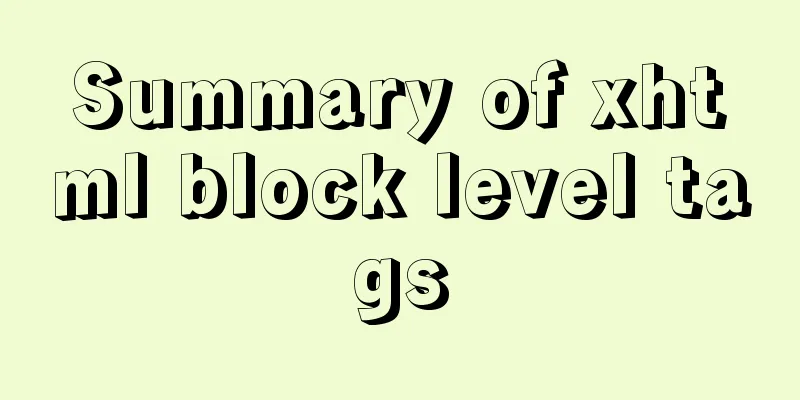Solution to JS out-of-precision number problem

The most understandable explanation of the accuracy problemFor example, the number 1÷3=0.33333333... Everyone knows that 3 will repeat infinitely, and mathematics can express it, but the computer needs to store it so that it can be retrieved and used next time. But 0.333333... this number repeats infinitely, how do you let the computer store it? No matter how big the computer's memory is, it can't store everything, right! So it can't store a value relative to mathematics, it can only store an approximate value, so when the computer stores it and then takes it out for use, there will be accuracy problems. JS exceeds the precision of the number solution1. The maximum safe number in js is Math.pow(2,53) - 1. If the number exceeds this, the precision will be lost. You can solve it by converting the number into a string, as follows:
// js maximum safe number: Math.pow(2, 53)-1
let a = '123456444565456.889'
let b = '121231456.32'
// a + b = '123456565796913.209'
function addTwo(a, b) {
//1. Compare the lengths of two numbers and add 0 to the front of the shorter one
if (a.length > b.length) {
let arr = Array(a.length - b.length).fill(0);
b = arr.join('') + b
} else if (a.length < b.length) {
let arr = Array(b.length - a.length).fill(0);
a = arr.join('') + a
}
//2. Reverse the two numbers (this is because people are used to adding from left to right, but numbers are added from right to left, so reversing them is easier to understand)
a = a.split('').reverse();
b = b.split('').reverse();
//3. Loop through two arrays and add them. If the sum is greater than 10, then sign = 1, and the value at the current position is (sum % 10)
let sign = 0; //mark whether there is carry let newVal = []; //used to store the final result for (let j = 0; j < a.length; j++) {
let val = a[j] / 1 + b[j] / 1 + sign; // Divide by 1 to ensure that they are all numbers. You can also use Number() here.
if (val >= 10) {
sign = 1;
newVal.unshift(val % 10) // unshift is used here instead of push because it saves the need to use reverse
} else {
sign = 0;
newVal.unshift(val)
}
}
// The last addition needs to add a digit '1'
return sign && newVal.unshift(sign) && newVal.join('') || newVal.join('')
}
// Refer to other friends' concise writing function addTwo(a,b) {
let temp = 0
let res = ''
a = a.split('')
b = b.split('')
while(a.length || b.length || temp) {
temp += Number(a.pop() || 0) + Number(b.pop() || 0)
res = (temp%10) + res
temp = temp > 9
}
return res.replace(/^0+/g, '')
}
2. When it comes to adding decimal parts, encapsulate the above method once and the complete implementation is as follows:
let a = '123456444565456.889'
let b = '121231456.32'
// a + b = '123456565796913.209'
function addTwo(a = '0',b = '0', isHasDecimal=false) {
//1. Compare the lengths of two numbers and add 0 to the front of the shorter one
if (a.length > b.length) {
let arr = Array(a.length - b.length).fill(0);
b = isHasDecimal && (b + arr.join('')) || arr.join('') + b
} else if (a.length < b.length) {
let arr = Array(b.length - a.length).fill(0);
a = isHasDecimal && (a + arr.join('')) || arr.join('') + a
}
//2. Reverse the two numbers (this is because people are used to adding from left to right, but numbers are added from right to left, so reversing them is easier to understand)
a = a.split('').reverse();
b = b.split('').reverse();
//3. Loop through two arrays and add them. If the sum is greater than 10, then sign = 1, and the value at the current position is (sum % 10)
let sign = 0; //mark whether there is carry let newVal = []; //used to store the final result for (let j = 0; j < a.length; j++) {
let val = a[j] / 1 + b[j] / 1 + sign; // Divide by 1 to ensure that they are all numbers. You can also use Number() here.
if (val >= 10) {
sign = 1;
newVal.unshift(val % 10) // unshift is used here instead of push because it saves the need to use reverse
} else {
sign = 0;
newVal.unshift(val)
}
}
// The last addition needs to add a digit '1'
return sign && newVal.unshift(sign) && newVal.join('') || newVal.join('')
}
function add(a,b) {
let num1 = String(a).split('.')
let num2 = String(b).split('.')
let intSum = addTwo(num1[0], num2[0])
let res = intSum
if (num1.length>1 || num2.length > 1) {
let decimalSum = addTwo(num1[1], num2[1], true)
if (decimalSum.length > (num1[1]||'0').length && decimalSum.length > (num2[1]||'0').length) {
intSum = addTwo(intSum, decimalSum[0])
decimalSum = decimalSum.slice(1)
res = `${intSum}.${decimalSum}`
} else {
res = `${intSum}.${decimalSum}`
}
}
return res
}
console.log(add(a, b)) // 123456565796913.209
// console.log(add('325', '988')) // 1313
Look at some typical problems with JS digital precision loss
SummarizeThis is the end of this article about how to solve the problem of out-of-precision numbers in JS. For more relevant content about out-of-precision numbers in JS, please search for previous articles on 123WORDPRESS.COM or continue to browse the related articles below. I hope you will support 123WORDPRESS.COM in the future! You may also be interested in:
|
<<: Installing MySQL 8.0.12 based on Windows
>>: Teach you how to deploy Vue project with Docker
Recommend
Example of how to configure cross-domain failure repair in nginx
Nginx cross-domain configuration does not take ef...
Linux system command notes
This article describes the linux system commands....
Detailed explanation of the installation, configuration, startup and shutdown methods of the Mysql server
1. Download from official website: https://dev.my...
MySql forgotten password modification method is suitable for versions 5.7 and above
1. Stop the mysqld.exe process first 2. Open cmd ...
Various types of jQuery web page verification code plug-in code examples
html <!DOCTYPE html> <html lang="en...
Detailed tutorial on installing MYSQL under WINDOWS
1. Download the installation package -Choose the ...
Analysis of MySQL Aborted connection warning log
Preface: Sometimes, the session connected to MySQ...
How to draw a vertical line between two div tags in HTML
Recently, when I was drawing an interface, I enco...
Detailed explanation of keepAlive usage in Vue front-end development
Table of contents Preface keep-avlive hook functi...
A brief discussion on event-driven development in JS and Nodejs
Table of contents Event-driven and publish-subscr...
MySQL 5.7.18 version free installation configuration tutorial
MySQL is divided into installation version and fr...
Detailed explanation of EXT series file system formats in Linux
Linux File System Common hard disks are shown in ...
jQuery custom magnifying glass effect
This article example shares the specific code of ...
Implementation of element shuttle frame performance optimization
Table of contents background Solution New Questio...
A simple way to achieve scrolling effect with HTML tag marquee (must read)
The automatic scrolling effect of the page can be...









